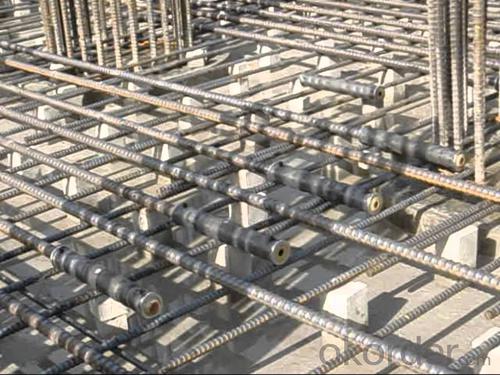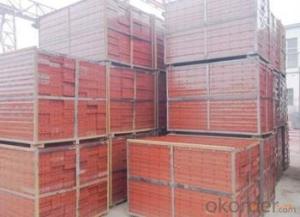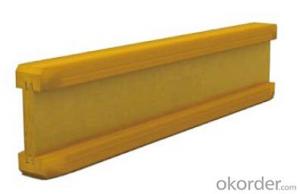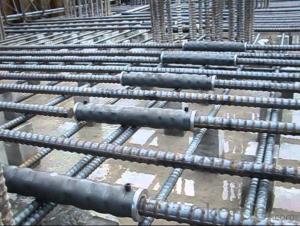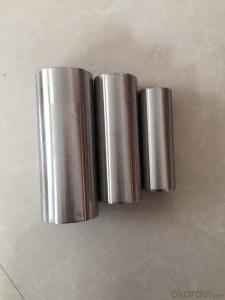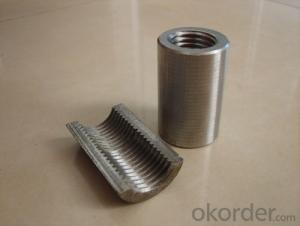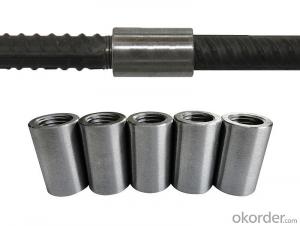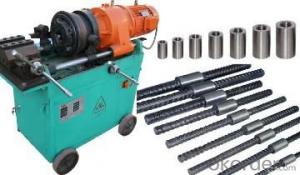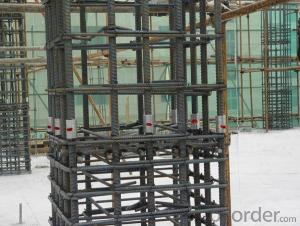Steel Coupler Rebar Scaffolding Truss Aluminum Scaffolding Beam Low Price
- Loading Port:
- Shanghai
- Payment Terms:
- TT OR LC
- Min Order Qty:
- 10000 pc
- Supply Capability:
- 10000000 pc/month
OKorder Service Pledge
OKorder Financial Service
You Might Also Like
Steel Coupler Rebar Scaffolding Truss Aluminum Scaffolding Beam with Low Price
1.Description:
Lapped joints are not always an appropriate means of connecting rebar. The use of Steel Rebar Couplers can simplify the design and construction of reinforced concrete and reduce the amount of reinforcement required.
The threaded steel coupler system is designed as a threaded reinforcement connection with 100% load transmission. The steel coupler rebar connection system is suitable for both static and dynamic load transmission in construction joints.
The coupler is designed as a threaded reinforcement connection for formed construction joints. Reinforcement work is normally carried out on both sides of the construction joint using lap joints or one side is anchored. The bar lengths are based on the structural analysis requirements of the building component and are calculated from anchorage and lap lengths.

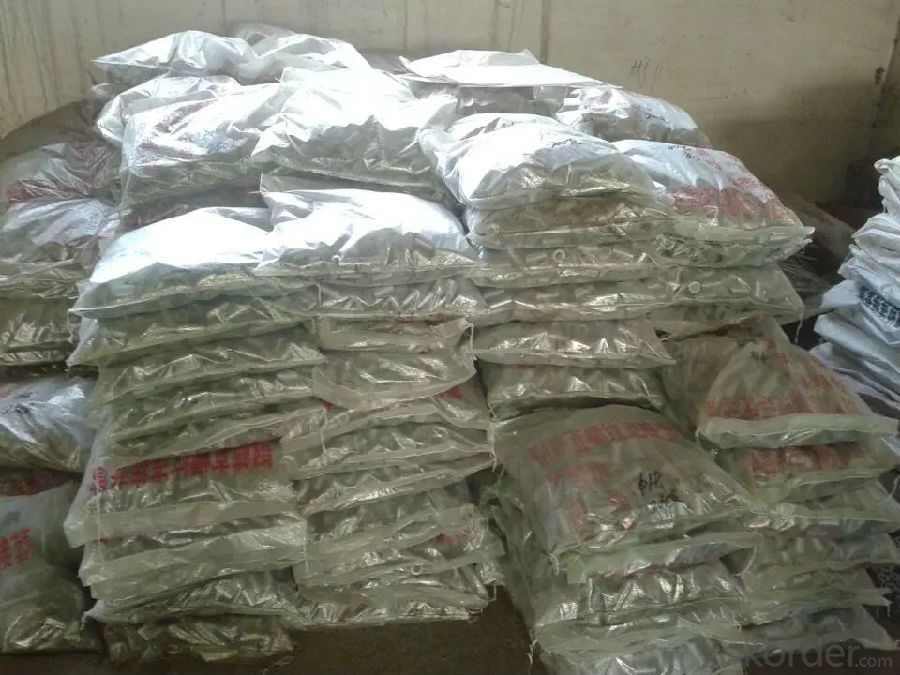
2.Advantages of Steel Coupler Rebar Lift Scaffolding Galvanized Scaffolding Tube with Low Price:
The coupler system provides the opportunity to connect rebars quickly, easily and cost effectively, even when large rebar diameters are used. This makes the steel coupler rebar range a logical extension to our rebendable CNBM reinforcement continuity system for rebars over 12 mm.
3.Available sizes of Steel Coupler Rebar Lift Scaffolding Galvanized Scaffolding Tube with Low Price:
14mm,16mm,18mm,20mm,22mmm,25mm,28mm,32mm,36mm,40mm
4.Delivery:
Delivery Term: FOB / CFR / CIF available.
Delivery Time: 15 days or less after order confirmed.
5.Why choose us?
Technical Expertise
Experienced Management
Stringent Quality Control
Exemplary Service
On-Time Delivery
Wide Product Range
Competitive Pricing
Huge branch network capable of catering worldwide
- Q: What are the safety precautions when working with steel formwork?
- When working with steel formwork, it is important to follow certain safety precautions to ensure the well-being of the workers. These precautions include: 1. Proper training: All workers should receive comprehensive training on the correct usage of steel formwork. This includes understanding the assembly, disassembly, and handling of the formwork system. Workers should also be trained on how to identify any potential hazards or risks associated with the steel formwork. 2. Personal Protective Equipment (PPE): Workers should always wear the appropriate PPE. This typically includes safety helmets, steel-toed boots, high-visibility vests, and gloves. In some cases, additional PPE such as safety glasses or respiratory protection may be required, depending on the specific tasks involved. 3. Secure and stable installation: It is crucial to ensure that the steel formwork is securely and stably installed before any work begins. This involves proper anchoring and bracing to prevent any movement or collapse during use. Regular checks should be conducted to verify the stability of the formwork throughout the duration of the project. 4. Safe access and egress: Workers should have safe and clear access to the steel formwork. This may involve the installation of secure ladders, platforms, or scaffolding to provide a stable and safe means of reaching the formwork. Adequate lighting should also be provided to ensure visibility and prevent accidents. 5. Regular inspections: Regular inspections of the steel formwork should be conducted to identify and address any signs of wear, damage, or deterioration. This includes checking for any bent or damaged components, loose connections, or signs of corrosion. Any issues should be addressed promptly to maintain the integrity and safety of the formwork. 6. Proper lifting and handling techniques: When moving or lifting steel formwork components, workers should use proper lifting techniques and equipment. This may involve the use of cranes, hoists, or forklifts, depending on the size and weight of the components. Adequate training and supervision should be provided to ensure safe lifting practices are followed. 7. Clear communication: Effective communication among workers is essential when working with steel formwork. This includes using hand signals, radios, or other communication devices to relay important information or warnings. Clear signage and barriers should also be used to indicate any restricted areas or potential hazards. By following these safety precautions when working with steel formwork, the risk of accidents, injuries, or structural failures can be significantly reduced, creating a safer working environment for all involved.
- Q: What are the different types of coatings used for steel formwork panels?
- Depending on the project's specific requirements, a variety of coatings can be used for steel formwork panels. Some commonly used coatings include: 1. Galvanized Coatings: To provide excellent corrosion resistance and durability, a layer of zinc is applied to the steel surface through galvanization. This type of coating is ideal for formwork panels that need to withstand long-term exposure to weather conditions. 2. Epoxy Coatings: These protective layers enhance the steel surface's resistance to corrosion, chemicals, and abrasion. They are highly durable and suitable for aggressive environments like chemical plants or marine structures. 3. Powder Coatings: A dry powder is applied to the steel surface and cured under heat to create a durable and corrosion-resistant protective layer. This coating is popular for both indoor and outdoor formwork panel applications. 4. Paint Coatings: Paint coatings are versatile and cost-effective options for steel formwork panels. While they provide a decorative finish and some protection against corrosion and abrasion, they may require regular maintenance and may not be as durable as other coatings. 5. Plastic Coatings: Polyethylene or polyvinyl chloride (PVC) coatings can be applied to steel formwork panels to protect against corrosion, chemicals, and abrasion. They are commonly used in environments where chemical resistance is crucial. Choosing the appropriate coating for steel formwork panels depends on factors such as expected lifespan, environmental conditions, and desired level of protection. Consulting a coating specialist or manufacturer can help determine the best option for a specific application.
- Q: Can steel formwork be used for airport construction projects?
- Yes, steel formwork can be used for airport construction projects. Steel formwork is known for its strength, durability, and ability to withstand heavy loads and harsh weather conditions, making it a suitable choice for large-scale projects such as airports. Additionally, steel formwork provides excellent quality and precision in concrete construction, ensuring the required high standards for airport infrastructure.
- Q: Are there any weight restrictions for transporting steel formwork?
- Yes, there are weight restrictions for transporting steel formwork. The exact weight limits may vary depending on the specific transportation regulations and guidelines of each country or region. It is advisable to consult with the relevant transportation authorities or logistic companies for accurate information on weight restrictions when transporting steel formwork.
- Q: How does steel formwork affect the overall labor requirements of a construction project?
- Steel formwork can significantly reduce the overall labor requirements of a construction project. Its durability and strength allow for faster and more efficient construction processes, reducing the time and effort needed for assembling and disassembling formwork. Additionally, steel formwork is reusable, eliminating the need for repetitive formwork construction and reducing labor costs.
- Q: Can steel formwork be used for architectural concrete beams?
- Yes, steel formwork can be used for architectural concrete beams. Steel formwork offers several advantages over traditional wooden formwork, such as increased durability and reusability. Steel formwork is stronger and more rigid, allowing for precise and accurate construction of architectural concrete beams. It also provides a smooth and consistent surface finish, which is important for achieving the desired aesthetic appearance of the beams. Additionally, steel formwork can be easily assembled, disassembled, and transported, making it a practical choice for architectural concrete beam construction.
- Q: Can steel formwork be used for school construction projects?
- Yes, steel formwork can be used for school construction projects. Steel formwork offers durability, strength, and stability, making it suitable for various construction applications, including school buildings. It provides a reusable and efficient solution for creating concrete structures, allowing for faster construction and cost savings. Additionally, steel formwork can be easily customized to meet specific design requirements and offers a high level of quality and precision in construction projects.
- Q: Can steel formwork be used for both straight and curved concrete walls?
- Yes, steel formwork can be used for both straight and curved concrete walls. Steel formwork is flexible and can be easily shaped to create curved or irregular shapes, making it suitable for constructing both straight and curved concrete walls.
- Q: Can steel formwork be used for both vertical and inclined concrete placements?
- One can utilize steel formwork for both vertical and inclined concrete placements. Steel formwork is renowned for its exceptional strength and durability, rendering it suitable for a myriad of construction applications. Regardless of whether it is a vertical wall or an inclined surface, steel formwork can provide the necessary support and shape to retain the concrete in place until it solidifies and becomes firm. The flexibility of steel formwork allows for easy adjustment and adaptation when it comes to inclined placements. The formwork panels can be connected and secured at various angles to achieve the desired inclination. This adaptability empowers contractors to construct structures with diverse slopes, such as ramps, stairs, and inclined walls. Moreover, steel formwork can endure the pressure exerted by the fresh concrete during the pouring and curing process. It presents a stable and secure framework that prevents the concrete from collapsing or distorting. This is especially crucial when dealing with inclined placements, as the concrete tends to exert more lateral pressure on the formwork. Furthermore, steel formwork boasts the advantage of being reusable. Unlike traditional timber formwork, steel formwork can be effortlessly dismantled and reassembled for future projects. This not only reduces construction costs but also minimizes waste and environmental impact. In conclusion, steel formwork proves itself to be a versatile solution that can be employed for both vertical and inclined concrete placements. Its strength, durability, and adaptability make it an ideal choice for a wide range of construction projects.
- Q: How does steel formwork contribute to the overall accuracy of concrete placement?
- There are several ways in which steel formwork contributes to the accuracy of concrete placement. Firstly, it provides a strong and stable structure, ensuring that the concrete is poured and cured in the desired shape and dimensions. The steel panels are designed to be resistant to deformation, reducing the risk of the formwork shifting or warping during pouring. Moreover, steel formwork allows for precise control over alignment and leveling. The panels can be easily adjusted and secured, ensuring that the concrete is poured at the intended level and alignment. This is particularly important for projects that require high accuracy, such as those with intricate architectural designs or precise measurements. Additionally, steel formwork offers the advantage of reusability. Unlike traditional wooden formwork, which can only be used a limited number of times, steel formwork can be used multiple times without compromising its structural integrity. This contributes to cost-effectiveness and consistent accuracy in concrete placement across various projects. Furthermore, the smooth surface of steel formwork helps achieve a high-quality finish on the concrete surface. The smooth panels minimize the risk of surface imperfections, ensuring a consistent texture and appearance. This is especially important for projects where the concrete will be exposed, such as architectural features or decorative elements. In conclusion, steel formwork is essential for maintaining accuracy in concrete placement. Its rigidity, adjustability, reusability, and smooth surface all contribute to achieving precise dimensions, alignment, and finish. This makes steel formwork a vital tool in construction projects that require high levels of accuracy and quality.
Send your message to us
Steel Coupler Rebar Scaffolding Truss Aluminum Scaffolding Beam Low Price
- Loading Port:
- Shanghai
- Payment Terms:
- TT OR LC
- Min Order Qty:
- 10000 pc
- Supply Capability:
- 10000000 pc/month
OKorder Service Pledge
OKorder Financial Service
Similar products
Hot products
Hot Searches


